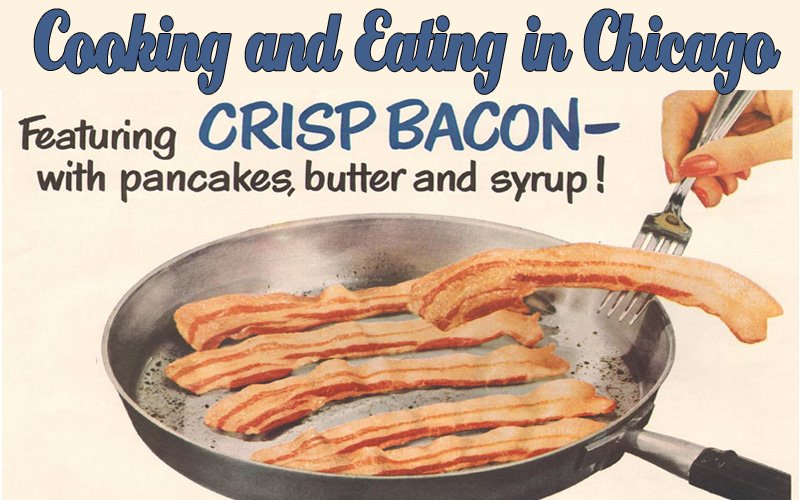
I'm a fool for bacon. Who isn't, I guess? It's much-beloved and there are probably dozens of blogs that devote themselves exclusively to bacon.
This isn't that blog. But, being the food-obsessed maximizer that I am, I have spent a good amount of time (and money) searching for the ultimate, holy-grail, smokiest, fattiest, crispiest bacony-est bacon that can be had.
First, let me just say that I haven't found it. Yet. But I have found some very good bacons. And I have also found a few really excellent bacons. I've also eaten some pretty bad bacon. Which, all things considered, is still not that bad. (Insert obligatory joke about pizza and sex here)
The beauty of not having found The Bacon is that I get to keep looking, buying different bacons and comparing and contrasting their pros and cons. The Bacon List is my attempt to document this (probably) never-ending process.
To be fair, it should be noted that there are really two drastically different types of bacon that are readily available in the marketplace; there's commercial, mass-produced stuff that you usually find grocery stores like Jewel, and then there's artisanally-produced stuff that's available at high-end markets, butcher shops, ethnic markets, and through mail order and the internet.
It's not fair to compare the former (which I'll refer to as "grocery store bacon") to the latter (which I'll refer to as "fancy bacon"). So I won't. While I will write about both types, and both will be well-represented on The Bacon List, I don't believe it's fair to compare them, given the vastly different processes by which they're produced, and the fact that there's usually a pretty big difference in price between the two types.
They're different products, so they will be talked about as such.
All bacon (with the exception of stuff that calls itself 'bacon' but is really some sort of dreadful soy-based tofurky product) is made from pork bellies. All bacon goes through a three-step process in which it's trimmed, cured, and thermally processed (ie cooked and/or smoked).
How those three steps are carried out makes the difference.
Step One--The Belly
Grocery store bacon is made with pork bellies that are procured from massive pork raising and processing plants and are usually brought in frozen. Fancy bacon is often made with pork bellies procured from heritage or heirloom breeds of pigs. More care is taken during the raising, slaughtering, and processing of these pigs, and the product isn't likely to arrive at the producer frozen. The skin is sometimes left on the bellies.
Step Two--The Cure
Pork bellies destined to become grocery store bacon are often "tumbled" prior to curing. The tumbling process is intended to soften the meat and allow it to more easily accept a cure. The grocery store bacon is usually given a 'wet' cure, or a brine, which is injected into the bellies. The brine consists of salt, sugars, sodium nitrates, and sometimes liquid smoke flavoring. In addition to curing salts (like sodium nitrate, or "pink salt"), grocery store wet-cured bacon often includes sodium phosphates (which allow the meat proteins to more easily bind with the liquid cure) and sodium ascorbates (which accelerates the curing process). The cure is when other flavors, like herbs, spices, or flavors like maple or honey are added, although grocery store bacon usually involves artificial versions of these ingredients. Brining or wet-curing bacon takes only a few hours.
Fancy or artisanal bacon is dry cured. This involves rubbing the pork belly with a cure that consists of salt, sugar, sodium nitrate, and any flavorings that are being added. The bacon is then hung and allowed to cure for anywhere between a few days to a month.
The difference is obvious. Grocery store bacon is paler in color, wetter, pumped-up looking, and usually shrinks a lot more when it's cooked.
Here's a short youtube video showing the production process for mass-produced grocery store bacon. This is obviously not indicative of all brands, but you get the picture.
Step Three--"Thermal Processing"
I'm not calling it smoking because grocery store bacon isn't always smoked. It's sprayed with liquid smoke and other flavorings and cooked--sometimes smoke is injected into the cooking unit--to an internal temperature of about 130 degrees F. After this, it's cooled down and pressed so as to give it more of a 'block' shape, before being sliced.
Fancy bacon is always smoked. With real smoke made by burning wood. Artisanal bacon is slow smoked for between one to three days over hardwood fires, during which the meat contracts, shrinks, and loses moisture content, which results in a lower finished product weight, but results in less shrinkage in the pan when it's cooked and delivers a stronger, more concentrated flavor. The long, slow smoking process also intensifies the natural pork flavor which yields a sweet/savory taste explosion that can only be described as "porky".
Various producers use different woods for the smoking--hickory and applewood are commonly used--and everyone throws their own little personal touch into the process, which is, of course, the beauty of artisanal production.
Now, all that being said, it's probably pretty clear which type of bacon I prefer. Artisanally-produced fancy bacon is certainly a treat and I'd eat it exclusively if money were no object. But it is. And these hand-crafted bacons sometimes run $8-$10 per pound or more, and often have to be ordered via the internet, which involves shipping fees.
If bacon were an occasional treat, that might be fine. But it's a staple. We eat it pretty often with breakfast and I cook with it all the time as well. So, despite my clear preference for fancy bacon, I do use grocery store bacon on a regular basis.
The Criteria
How to measure and describe this stuff? Read around those blogs I linked to above and you'll soon see that it's difficult to quantify porky goodness. Here's how I'll attempt to do so:
Each bacon I place on The Bacon List will be rated, described, and categorized using the following criteria:
- Designation--Fancy or Grocery Store?
- Price--How much did I pay per pound for the bacon?
- Uncooked appearance--Color, texture, wet- or dry-ness, mushy or firm, etc...
- How it cooks--Tendency to curl, how much it shrinks, tendency to spatter...
- Cooked appearance--Color, shape, texture
- How does it taste--Sweetness, saltiness, smokiness, texture (melting, chewy, flabby, spongy), "porkiness"
- Overall rating--All bacons reviewed will be given an overall rating from 1-10, with 1 being practically inedible (I say "practically" since, you know, it's bacon--how bad can it be?), 5 being a perfectly serviceable bacon for use in cooking or on a sandwich, and 10 being....well, let's be honest; there won't be a 10. That would mean I'd have to stop looking for The Perfect Bacon. And the journey's really the point of the whole thing anyway.












No comments:
Post a Comment